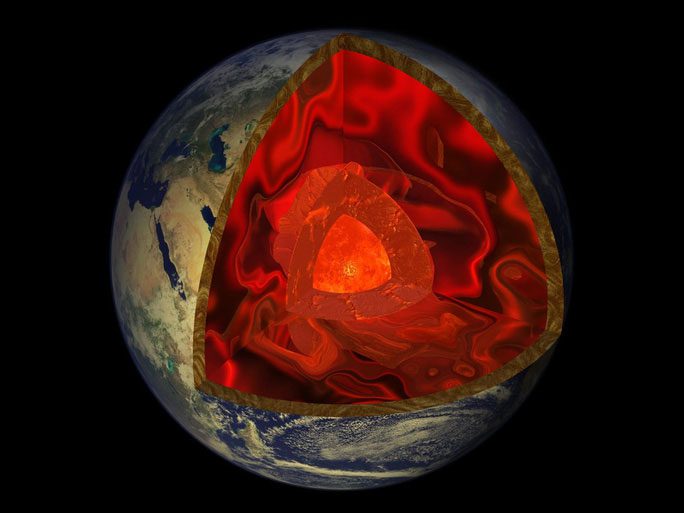A new discovery regarding the feedback loop effects between earthquakes and the movement of tectonic plates has raised concerns about unpredictable disasters while also presenting an opportunity to improve earthquake forecasting models.
Recent research from the Department of Geoscience, Faculty of Geosciences and Resource Management, University of Copenhagen (Denmark) reveals a frightening truth: current earthquake forecasting models based on tectonic plate activity may not be accurate, leading to many disasters striking unexpectedly without warning.

The complex layers of the Earth drive tectonic activity, which is the continuous movement of the Earth’s crustal plates – (Photo: SciTech Daily)
According to SciTech Daily, it was previously believed that the movement of tectonic plates – the Earth’s crustal pieces – created energy accumulation at the plate boundaries, which was occasionally released as earthquakes.
This is true, but new research shows that this is not a one-way effect. By utilizing extensive GPS data and analyzing the famous Izmit earthquake of 1999, researchers found that the Anatolian continental plates (of Turkey) had unexpectedly changed their direction of movement.
This change influenced subsequent unexpected earthquakes in the region.
Thus, the movement of the Earth’s crustal plates causes earthquakes, which in turn affect the plates’ movement. When the “puzzle game” is disrupted, it generates a new earthquake pattern that differs from the previous one and can lead to inaccuracies in earlier forecasts.
This phenomenon may have occurred in many other places around the world: other pieces of the Earth’s crust have also changed direction, resulting in a reorganization of the overall tectonic picture without anyone noticing, leading to many disaster warning models becoming inaccurate.
According to lead author Juan Martin De Blas, this may not necessarily be bad news. The bidirectional feedback effect could help scientists improve earthquake forecasting models very effectively and accurately, allowing for updates and adjustments after each significant earthquake.
The study was recently published in the scientific journal Geophysical Journal International.





















































